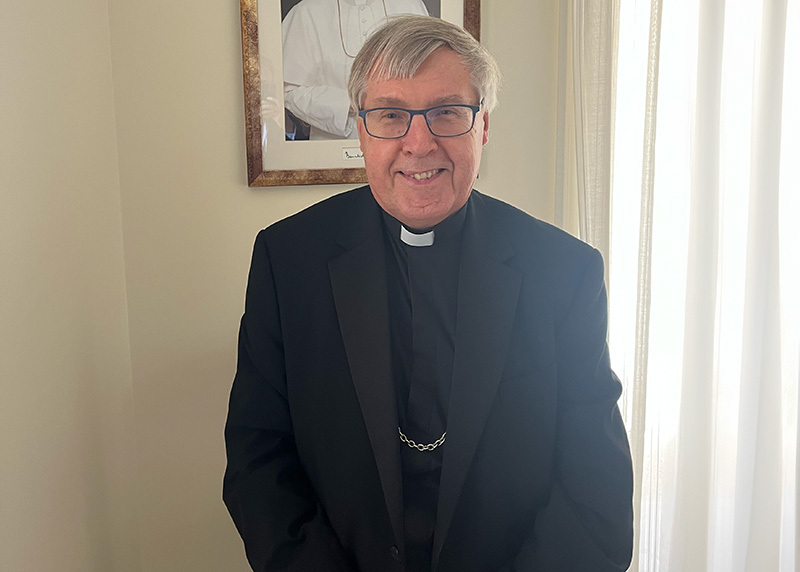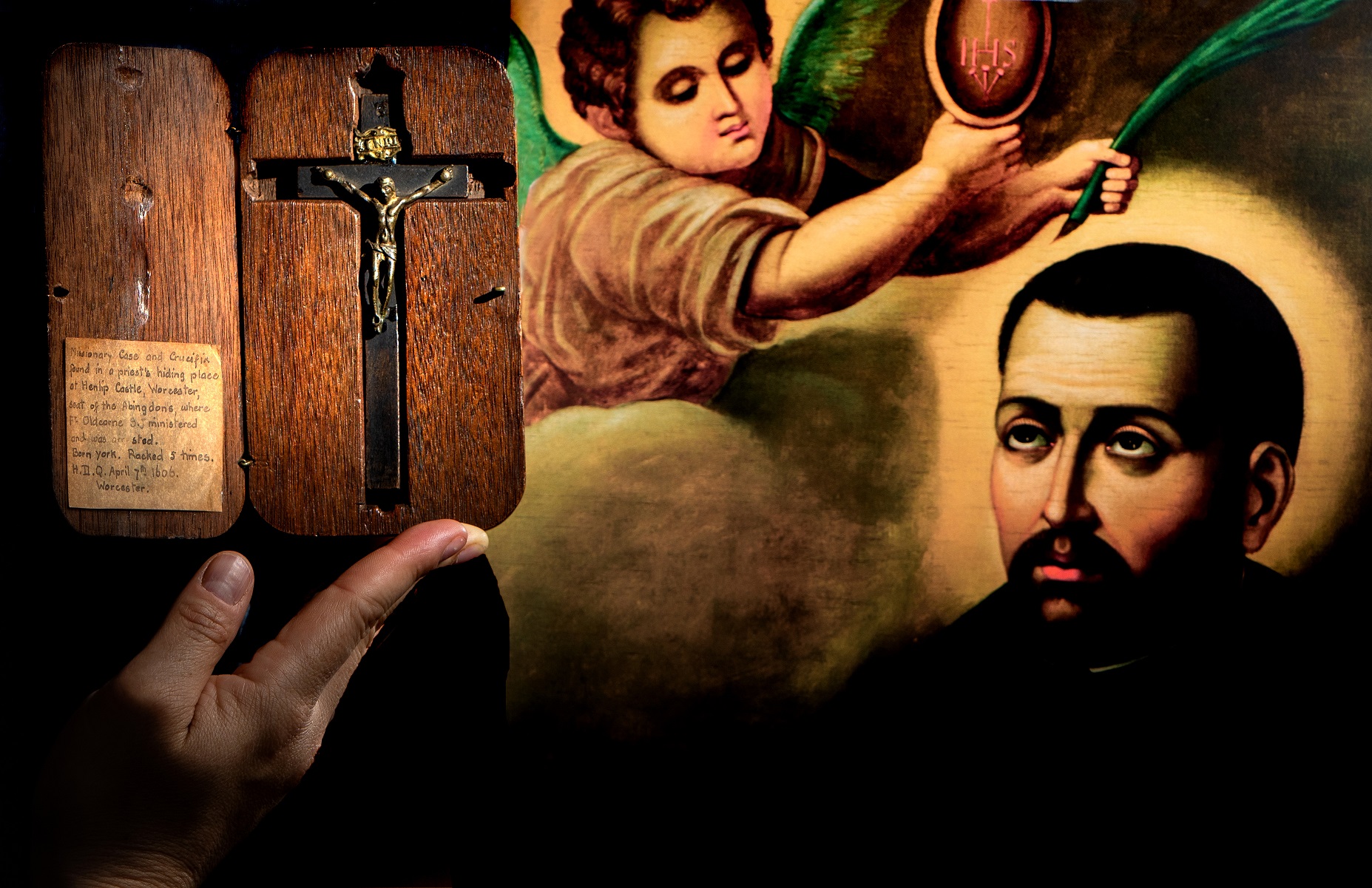A rare 16th-century Crucifix that survived raids on Catholic households after the Gunpowder plot is on display in York.
It is part of an exhibition at the Bar Convent titled Hide & Seek: the Aftermath of the Gunpowder Plot.
The Crucifix belonged to Blessed Edward Oldcorne SJ, who for 14 years served as chaplain of Hindlip Hall in Worcester.
A label on the Crucifix states that Oldcorne, born in York was “racked” five times, and H.D.Q. (hung, drawn and quartered) before he died on April 7, 1606.
He was charged with high treason for being a priest, but though once a pupil at the same York school as Guy Fawkes, Oldcorne had no link to the Gunpowder Plot.
However, he surrendered to the authorities after hiding in the same priest hole as Fr Henry Garnet SJ, who had learned of the November 1605 plot while hearing confession. Garnet – unable to break the seal of the confessional – had futilely sought to deter the plotters.
A month after the failed plot, Garnet had sought refuge in Hindlip Hall in Worcestershire. Reputedly the safest Catholic house in England, Hindlip possessed 11 priest holes. Oldcorne hid in one in a chimney breast with Fr Garnet. St Nicholas Owen, the master carpenter and Jesuit lay brother who had fashioned most of England’s priest holes, hid in a second priest hole with Oldcorne’s servant, Blessed Ralph Ashley.
The hall was searched for 12 days by the authorities but none of the four men was discovered. They eventually surrendered because conditions in their hiding places had become unbearable.
All were subsequently sentenced to death. Oldcorne and Ashley were beatified in 1929. Owen, who is believed to have masterminded the escape of Fr John Gerard SJ from the Tower of London in 1597, was canonised in 1970. For 18 years he had built priest holes in the homes of England’s Catholic families.
Dr Hannah Thomas, Special Collections Manager at the Bar Convent described Oldcorne’s Crucifix as “one of the most remarkable items in our possession.”
She said: “We have worked closely with experts such as the late Michael Hodgetts, who painstakingly researched the history of all known priest’s hiding holes in England and Wales, and we are now confident in believing that this is the only item surviving from the raids following the Gunpowder Plot.”
Thomas added that the exhibition explores how priest holes were “cleverly disguised within the fabric of buildings” as well as “the ingenious ways in which Catholic households secretly continued to practice their faith including disguises, codes, invisible ink, and Catholic items concealed to look like everyday objects.”
Hide & Seek: the Aftermath of the Gunpowder Plot is open until November 16.



 Loading ...
Loading ...